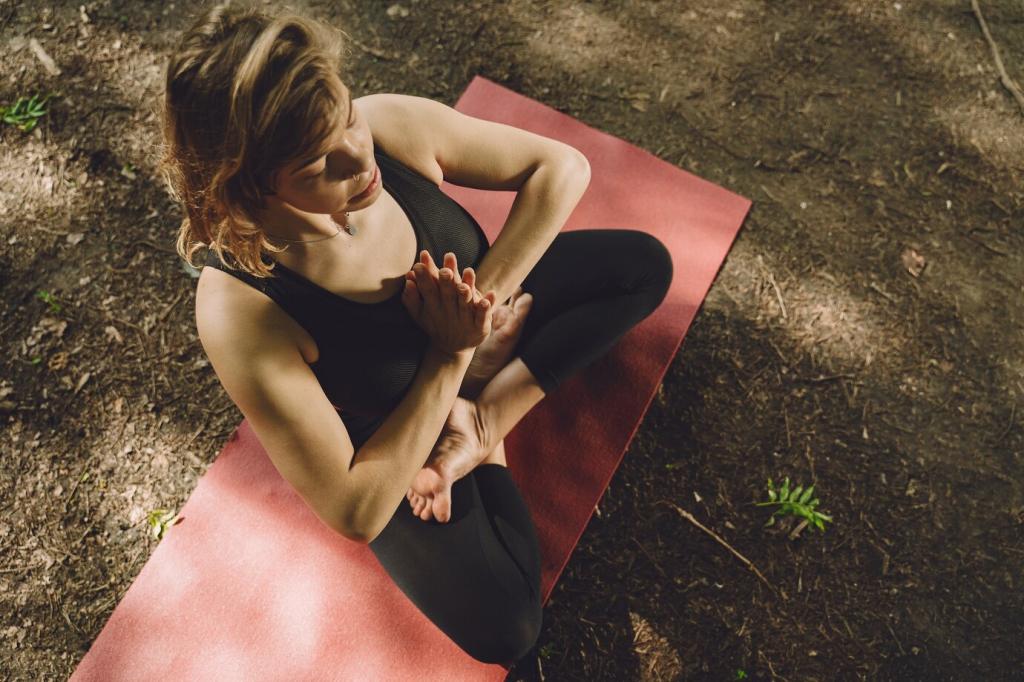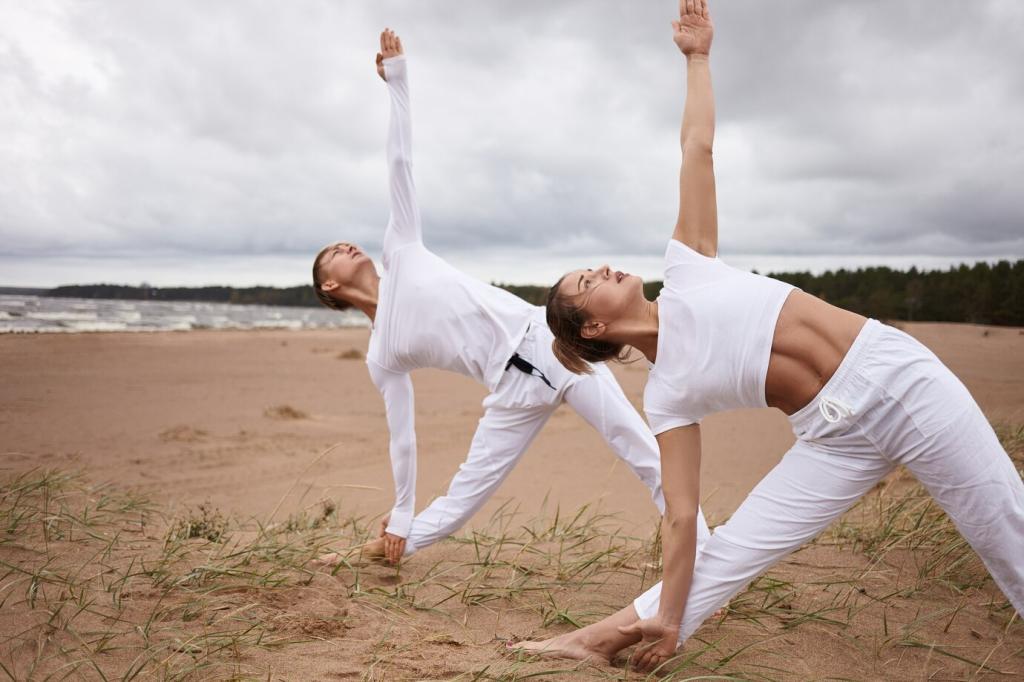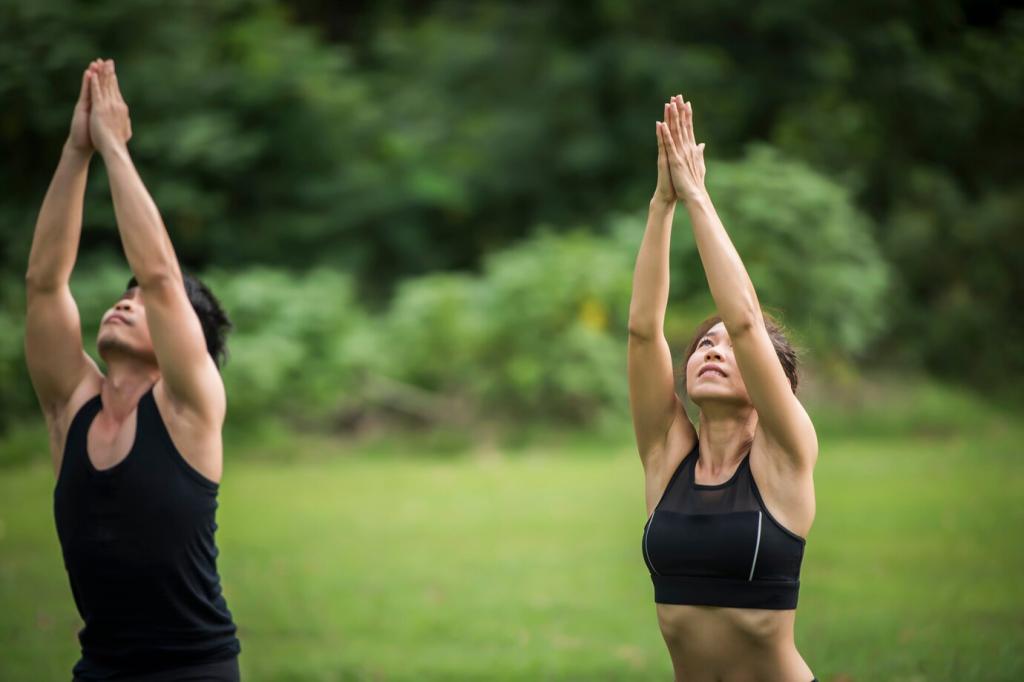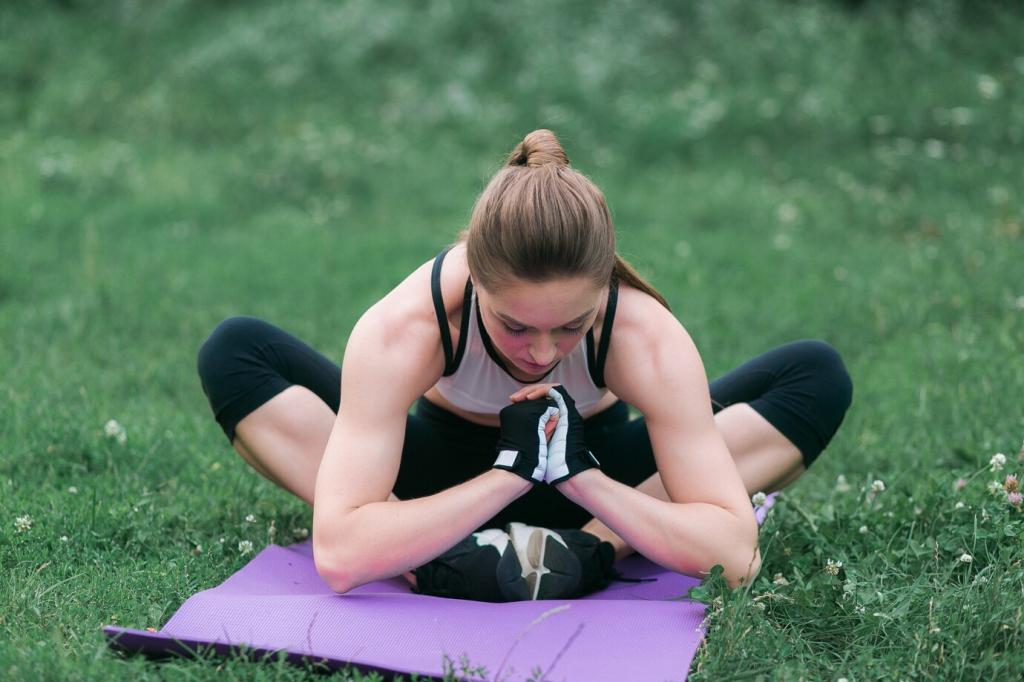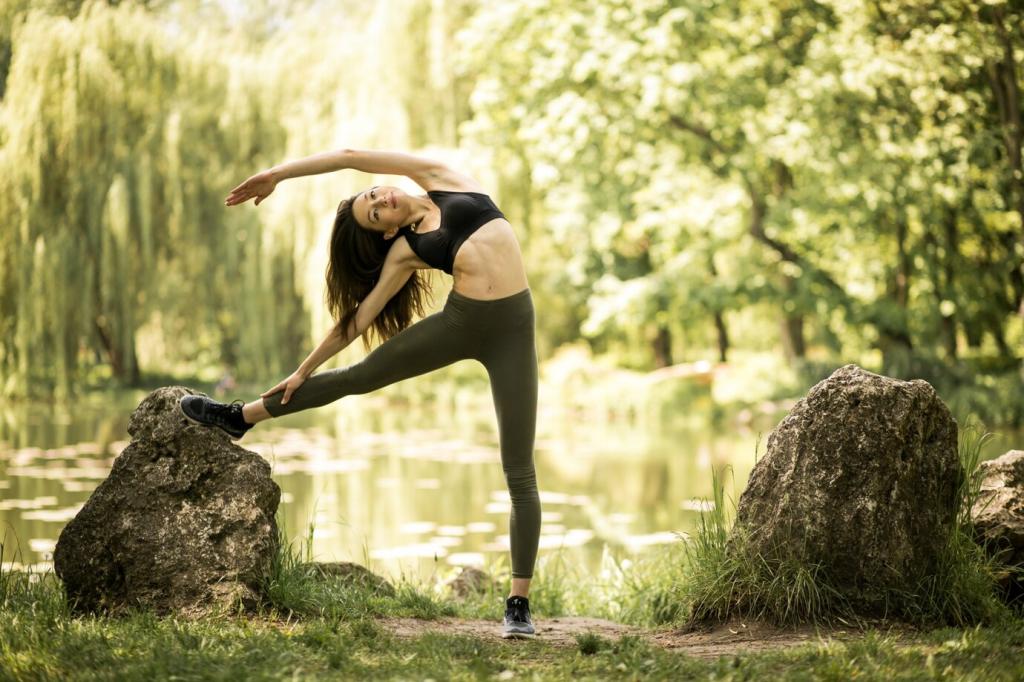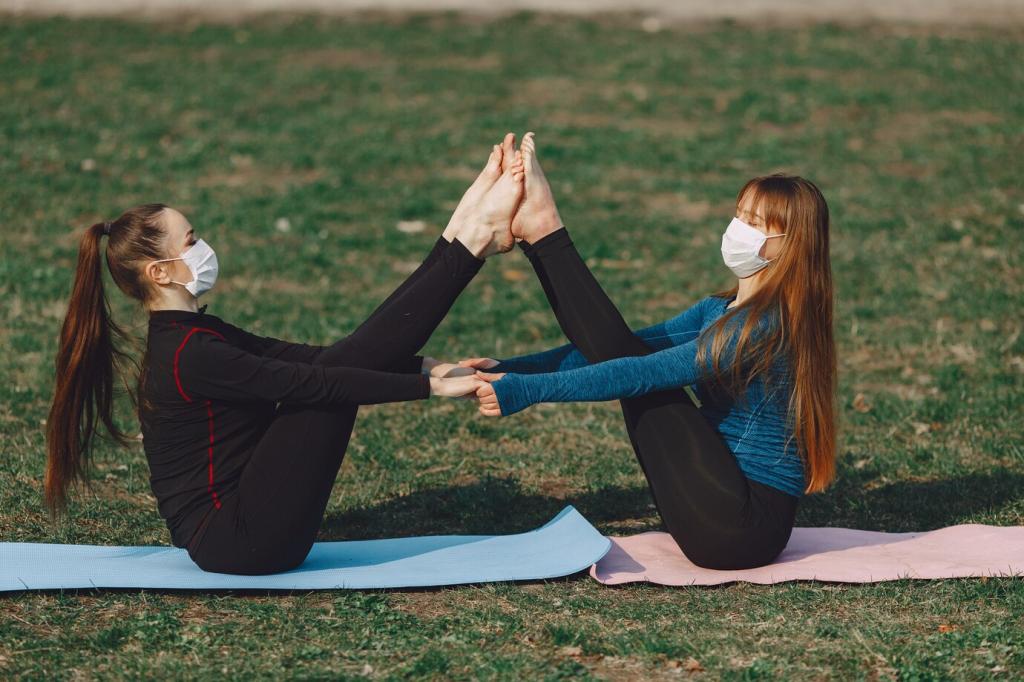Functional Flow: Poses and Transitions that Build Resilient Tissue
From Low Lunge, tuck toes and lightly press the back foot into the mat as you lengthen through the hip flexors. Pulse small, then add an isometric hold. The slight load teaches tissues to adapt, making splits work more stable and less likely to fade after class.
Functional Flow: Poses and Transitions that Build Resilient Tissue
Warm hamstrings with Bridge Marches, keeping hips level as feet lift. Transition to Half Split or Pyramid with micro‑bends and active foot pullback. Finish with an eccentric toe‑tap hinge. This sequence builds strength through range, reducing cranky hamstrings and sharpening hinge mechanics.

